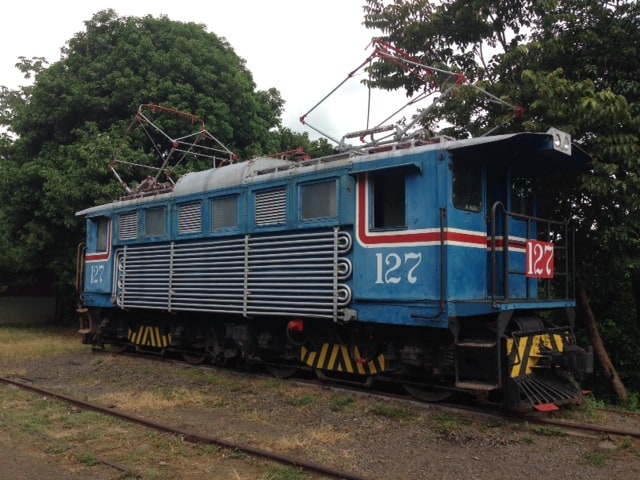Maybe it’s the ubiquitous traffic jams on the streets and highways that make us long for a more comfortable way to go. Maybe it’s our vision of ultramodern high-speed rail travel in Europe and other parts of the world, or memories of those beloved childhood train sets. Whatever the reason, everybody likes trains, and in Palmar Sur and Río Grande de Atenas, two attractions provide a way to learn more about the role of railways in the country’s history.
The latest tribute to railroad rides in Costa Rica is brand-new: The restoration and dedication of Engine Number 84 in Palmar Sur, in the country’s Southern Zone, took place at a program sponsored by the National Museum on Aug. 8. This small Baldwin engine began its runs in 1940 to haul tons of bananas from the fields to the port in Golfito.
It was an essential tool for banana production because it stopped at banana farms along the route and sometimes hauled as many as 40 carloads of bananas. It also carried passengers, but was mainly a working tool. Known as the black engine, it was made by the Brown company.
Because of the hot, humid climate in the Southern Zone, the locomotive deteriorated and was abandoned when the banana farms closed down, but the Development Association of Palmar Sur recognized it as a part of local history, raised funds and organized volunteers to bring it back to life. Locomotive Number 84 now proudly stands across the street from the central park in Palmar Sur.
In Río Grande de Atenas, about 30 minutes northwest of San José, the Museo Ferroviario, or Railroad Museum, contains a hodgepodge of tools, seats, tickets and memorabilia that will fascinate anyone who wants to know about train travel or is fond of antiques. It’s housed in the original station built in 1923, when trains were a vital way for people and cargo to come and go.
Unfortunately, this little local museum, which is easy to find by the train tracks on the main road into town, is understaffed and underfunded. Former railway worker Juan Ramón Arguedas works virtually alone to maintain the collection and show visitors around. The museum is only open on Sundays from 10 a.m. on, but visitors can also call Arguedas at 8757-6953 on other days, and he will come over from his house across the tracks to open up. There is no entrance fee, but contributions will help.
Arguedas is pleased to explain why, where, when and how things worked. Visitors learn that on curves, the outer rail is higher than the inner rail, and that the electric trains that were used in 1923 were made by the AEG company in Germany and were powered by an electric line running from San José to Caldera. An electric engine sits on a spur line outside.
The building has an office, a passenger waiting room that houses the rail collection, a cargo room now stocked with agricultural antiques, and smaller rooms for home implements, all from the Atenas area. A little room with homemade toys includes miniature oxcarts made from sardine cans, along with wheels and other amusements from the past.
Photos and newspaper clippings tell more about life along the line. An added adventure is a walk along the rails (about 500 meters) to the scary old bridge spanning the Río Grande. Although trains no longer pass this way, small rail cars carrying maintenance crews do. According to the National Railroad Institute, there are plans to reactivate this route to the Pacific coast, but not in the near future.






